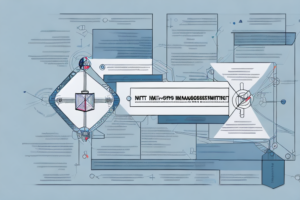What are the 4 components of risk?
8 min read
Four interconnected circles
Risk is an inherent part of any business or industry. In order to effectively manage risk, it is important to first understand the concept of risk itself. Risk can generally be defined as the possibility of harm or loss arising from a particular event or action. As such, it is important to identify the different types of risks, as well as the key components of risk that may impact any given organization or industry.
Understanding the concept of risk
Before delving into the specific components of risk, it is important to have a fundamental understanding of the concept of risk itself. Risk is an essential aspect of any business or industry – it is impossible to completely eliminate all risks, but it is possible to manage and mitigate them to reduce their impact. Identifying and analyzing different types of risk is a crucial first step in developing an effective risk management strategy.
One important aspect of understanding risk is recognizing that it is not always negative. While many people associate risk with potential harm or loss, there are also opportunities for positive outcomes that involve some level of risk. For example, investing in a new product line or expanding into a new market may involve some risk, but it also has the potential for significant rewards.
Another key factor in understanding risk is recognizing that it is not static – it can change over time. As businesses and industries evolve, new risks may emerge, while existing risks may become less significant. This means that risk management strategies must be flexible and adaptable, able to respond to changing circumstances and new challenges.
The importance of identifying risk components
Effective management of risk begins with identifying the key components of risk that may impact an organization or industry. By breaking down risk into its component parts, it is possible to effectively analyze and manage each component individually, reducing the chances of a substantial loss or harm event occurring.
One of the key benefits of identifying risk components is that it allows organizations to prioritize their risk management efforts. By understanding which components of risk pose the greatest threat, organizations can allocate resources and implement strategies to mitigate those risks first. This can help to minimize the impact of potential losses and ensure that the organization is better prepared to handle any unexpected events that may arise.
The different types of risks
There are a number of different types of risks that may impact a business or industry. Some common types of risks include credit risk, market risk, liquidity risk, operational risk, and reputational risk. Each of these risks has its own unique characteristics and potential consequences, making it important to tailor risk management strategies to the specific risks that are most relevant for any given situation.
Credit risk is the risk that a borrower will default on their debt obligations, resulting in a loss for the lender. This type of risk is particularly relevant for financial institutions, such as banks, that lend money to individuals and businesses. Market risk, on the other hand, refers to the risk of losses due to changes in market conditions, such as fluctuations in interest rates or stock prices.
Liquidity risk is the risk that a company may not be able to meet its financial obligations due to a lack of cash or other liquid assets. This type of risk is particularly relevant for companies that rely heavily on short-term financing or have a high level of debt. Operational risk refers to the risk of losses due to internal factors, such as human error, system failures, or fraud. Finally, reputational risk is the risk of damage to a company’s reputation due to negative publicity or other factors, which can have a significant impact on the company’s financial performance and long-term viability.
The four key components of risk
While the types of risks that may impact an organization or industry can vary, there are four key components of risk that are common to all situations. These components are the likelihood of a risk event occurring, the consequences of the risk event, the timeframe of the risk, and the ability to manage and offset the risk. By understanding these four components of risk, it is possible to develop a comprehensive and effective risk management strategy.
The likelihood of a risk event occurring is a critical component of risk management. This component involves assessing the probability of a risk event happening and the factors that may contribute to its occurrence. For example, a company may assess the likelihood of a cyber attack based on the security measures in place and the potential vulnerabilities in their systems.
The consequences of a risk event are also important to consider. This component involves assessing the potential impact of a risk event on the organization, including financial, reputational, and operational impacts. By understanding the potential consequences of a risk event, organizations can better prepare for and mitigate the effects of such an event.
How to assess and manage risk
In order to effectively manage risk, it is important to assess each component of risk in detail. This process may include identifying the likelihood of a risk event occurring, analyzing the potential consequences of the event, evaluating the timeframe of the risk, and assessing the organization’s ability to manage and offset the risk. Once these components have been identified and analyzed, it is possible to develop a comprehensive risk management strategy that effectively mitigates potential risk events.
One important aspect of risk management is to regularly review and update the risk management strategy. This ensures that the organization is prepared for any new risks that may arise and that the existing risk management strategy is still effective. It is also important to communicate the risk management strategy to all stakeholders, including employees, shareholders, and customers, to ensure that everyone is aware of the potential risks and the steps being taken to mitigate them.
Another key factor in effective risk management is to have a contingency plan in place. This plan outlines the steps that should be taken in the event that a risk event does occur. The contingency plan should include clear guidelines for who is responsible for managing the event, what steps should be taken to mitigate the risk, and how the organization will communicate with stakeholders during the event. By having a well-defined contingency plan, the organization can minimize the impact of a risk event and quickly return to normal operations.
Examples of how risk components impact various industries
The impact of risk components can vary significantly across different industries and organizations. For example, credit risk may be more significant for a financial institution than it would be for a manufacturing company, while operational risk may be more pronounced in a healthcare or service industry than in a retail setting. Understanding how risk components impact specific industries is crucial for developing an effective risk management strategy.
Another example of how risk components can impact industries is the importance of market risk in the investment industry. Investment firms must constantly monitor market fluctuations and adjust their portfolios accordingly to mitigate the risk of financial losses. On the other hand, market risk may not be as significant for a construction company that primarily operates within a local market. It is essential to identify and prioritize the relevant risk components for each industry to effectively manage risk and ensure long-term success.
Tips for effective risk management
There are a number of best practices that can help organizations effectively manage risk. These may include developing a comprehensive risk management plan, regularly reviewing and updating risk management policies, implementing robust controls and monitoring systems, and engaging in ongoing risk assessment and analysis.
Another important aspect of effective risk management is ensuring that all employees are trained on risk management policies and procedures. This can help to create a culture of risk awareness and responsibility throughout the organization, and can also help to identify potential risks before they become major issues.
It is also important to regularly communicate with stakeholders, including customers, suppliers, and investors, about the organization’s risk management practices. This can help to build trust and confidence in the organization, and can also provide valuable feedback and insights into potential risks that may not have been identified internally.
The role of technology in analyzing and mitigating risks
Advances in technology have made it easier than ever to analyze and mitigate risks. From predictive analytics tools that can identify potential risk events before they occur, to data management systems that can help organizations more effectively analyze and manage risk, technology is playing an increasingly important role in risk management strategies.
One example of how technology is being used to mitigate risks is through the use of drones. Drones equipped with cameras and sensors can be used to inspect hard-to-reach areas, such as oil rigs or power lines, for potential hazards. This not only reduces the risk of accidents for workers, but also allows for more efficient and cost-effective inspections. Additionally, drones can be used to monitor natural disasters, such as hurricanes or wildfires, providing real-time data to emergency responders and helping to mitigate the impact of these events.
Case studies of successful risk management strategies
There are many examples of organizations that have successfully implemented comprehensive risk management strategies. By examining case studies of successful risk management, it is possible to identify best practices and learn from the experiences of others in order to develop more effective risk management strategies.
Common mistakes to avoid when dealing with risk components
There are several common mistakes that organizations and individuals may make when dealing with risk components. These mistakes may include failing to identify all potential risks, failing to develop a comprehensive risk management plan, and failing to make risk management an ongoing and dynamic process. By avoiding these common mistakes, organizations can more effectively manage risk and reduce the likelihood of harm or loss.
The future of risk management: trends and predictions
The field of risk management is constantly evolving, with new tools and strategies being developed all the time. Some emerging trends in risk management include a greater focus on proactive risk management, improved use of data analytics and artificial intelligence, and increased collaboration between different stakeholders in the risk management process.
Risk component analysis in the financial sector
The financial sector is particularly susceptible to a wide variety of risks, including credit risk, market risk, and liquidity risk. Effective risk management in the financial sector requires a comprehensive understanding of these risks, as well as the development of robust risk management tools and strategies that can mitigate potential harm or loss.
Risk component analysis in healthcare and medicine
The healthcare and medicine industries are also highly susceptible to a wide range of risks, including operational risk, reputational risk, and clinical risk. Effective risk management in these industries requires a deep understanding of both the potential risks and the specific tools and strategies that can be used to mitigate them.
Risk component analysis in cybersecurity and data protection
The rise of cyber threats and data breaches has made effective risk management in cybersecurity and data protection an increasingly important area of focus. Risk component analysis in this field may include assessing the likelihood of a data breach occurring, analyzing the potential consequences of a breach, evaluating the effectiveness of current security systems, and developing and implementing robust data protection policies and procedures.
In conclusion, understanding the four key components of risk – the likelihood of a risk event occurring, the consequences of the risk event, the timeframe of the risk, and the ability to manage and offset the risk – is essential for effective risk management in any organization or industry. By assessing these components in detail, developing comprehensive risk management strategies, and avoiding common mistakes, it is possible to mitigate potential harm or loss and ensure the success and durability of any organization.



